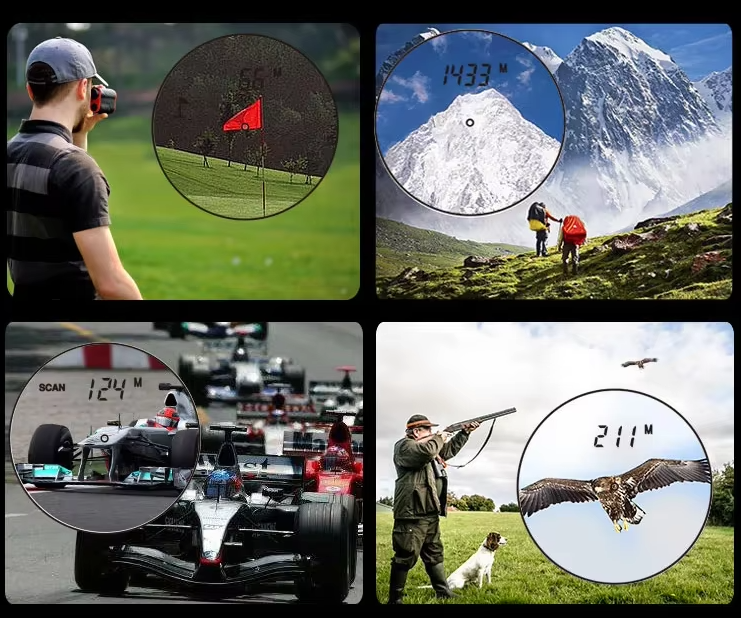The Oncik 5000X laser rangefinder is a high-end measurement tool that has the ability to measure general targets from 0 to 6100 meters. The device supports multiple measurement modes, including horizontal distance/slant distance, vertical distance/tilt angle, height difference between two points, etc., and integrates GPS function to provide positioning accuracy of 3 to 5 meters.
The laser rangefinder has an accuracy of up to ±0.1 meters (for targets less than 400 meters) and an inclination angle measurement accuracy of ±0.1°. In addition, the Oncik 5000X has 8x optical magnification, IP67 protection, Bluetooth connectivity, and up to 20 hours of continuous working time.

Application range:
Laser rangefinders are widely used in fields such as power inspection, forestry management, construction, emergency rescue, outdoor activities, and scientific research. Its versatility and portability make it an ideal choice for professionals.
Working principle:
The working principle of the laser rangefinder is mainly based on the echo time and light speed after the laser pulse is reflected on the target to calculate the distance and height. The specific process includes:
1. The laser transmitter emits a short pulse laser beam.
2. The laser beam is irradiated onto the target, part of the laser energy is absorbed by the target, and part of the laser is reflected back.
3. The receiver receives the reflected laser and converts it into an electrical signal.
4. The computer calculates the distance and height between the target and the rangefinder by calculating the arrival and return time of the reflected laser and the value of the speed of light.
5. In addition, some advanced laser rangefinders also have angle measurement functions. By measuring the angle between the laser beam and the target, the three-dimensional coordinates of the target can be further calculated.
How to use:
The method of using a laser rangefinder usually includes the following steps:
1. Power on and set up: Press the power button and make relevant settings as needed, such as measurement units (meters, feet, etc.), measurement modes (single measurement, continuous measurement, etc.).
2. Aim at the target: Aim the laser rangefinder at the target object to be measured to ensure that the laser beam can accurately irradiate the target object.
3. Measurement and reading: Press the measurement key, wait for the measurement result to be displayed on the screen, and record the reading.

Notes:
1. When using the laser rangefinder, avoid shining the laser beam directly on the eyes or strong light sources to avoid eye damage.
2. During the measurement process, the distance and angle between the rangefinder and the target object should be kept stable to ensure the accuracy of the measurement results.
3. Regularly calibrate and maintain the laser rangefinder to ensure its long-term stable operation and measurement accuracy.


